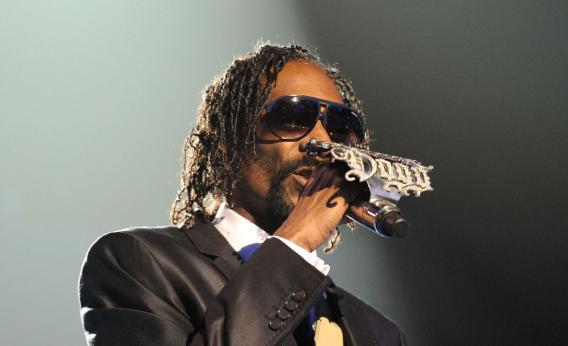Snoop Dogg understands form and function. For his latest book (he’s also written an autobiography and a novel), the rapper has printed a collection of his lyrics on rolling papers, presumably so that after you’re done reading along to a weed anthem like “This Weed Iz Mine,” you can use them to light up. (And for those that do want to light up, the book’s binding is covered with a special surface for striking a match.)
Snoop’s approach to publishing may be unique, but he’s only the latest to release a book that could never be fully appreciated on your e-reader. As we exchange our bookcases for more compact Kindles and Nooks, many feel nostalgia for the physical book. The results have run the gamut from kitschy novelty books to gestalt art objects. (I’d like to think that Snoop’s offering falls somewhere in between.)
Perhaps the most high-profile response came last year in the form of Jonathan Safran Foer’s Tree of Codes, a novel-cum-sculpture physically carved out of another novel, in this case Bruno Schulz’s Street of Crocodiles. (The ‘s’ and ‘t’ are cut out of Street so it spells Tree, and so on.) The result is a postmodern object that many seem to have enjoyed as a story, though others have found the results to be too difficult to actually read.
A more popular example at Slate is Lauren Redniss’s Radioactive. Radioactive might be most simply described as an illustrated biography of Marie and Pierre Curie, but Slate columnist Ron Rosenbaum couldn’t decide whether it was “a work of art in the form of a book, or a book in the form of a work of art.” The point is that it works as both. Not only is the book lovingly illustrated, but it includes a typeface specifically created for the book, and pages printed using cyanotype printing so that they would luminesce (glow in the dark) just like the Curies’ discoveries and creations. Even the latest iPad can’t quite recreate an effect like that.
Before each of these came Anne Carson’s Nox in 2010, an elegy for the poet’s older brother in the form of a sort of scrapbook: It comes in a box and unfolds like an accordion, revealing itself in paintings, photos, stamps, poems, and hand-written letters. Some noted its resemblance to a headstone, and it has a physical presence that defies full replication on an e-reader.
Some of these titles could be described as a book d’art, but others fail to transcend simple gimmickry. After you’re done with a page or two out of Snoop Dogg’s Rolling Words, you might want to take a page or two out of this edible cookbook, viewable as a slideshow on the Huffington Post. While the author of that post believes that “the idea of creating an edible cookbook makes a lot of sense,” the cookbook appears to be completely illegible.
In this way books that are viewed primarily as objects can be a little troubling. While e-readers eliminate the purpose books sometimes serve as cultural badges—on your bookshelf or on the subway—some of these books seem to herald in a new era of books as decorations, rather than as something you actually read. Last year the New York Times did a whole slideshow on “Books as a Way to Grace a Room.” While sorting your bookshelf by color might be relatively harmless, some of the decorations highlighted in the Times’ slideshow are so elaborate that you might be hesitate to ever pull a book off the shelf again.
While e-readers have increased interest in books as objects, this is not an entirely new way of thinking about books. Before the printing press books were often illustrated by hand and gilt with gold leaf, making them prized possessions as much as means for reading. Anne Carson’s Nox could be considered just the latest in the tradition of the book-in-a-box—see, for example, B.S. Johnson’s The Unfortunates—a style of book that seems to be becoming more familiar.
In the meantime Snoop’s new book seems to have its own message for e-readers: Put this in your pipe and smoke it.
Previously:
I Made Jonathan Franzen Sign His First Kindle
